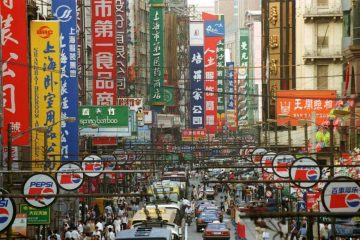Is the U.S. Economy Heading for Recession? Even in Trump Country They’re Getting Worried

Up until now, the Trump years have been good ones for CNC Machines.
The privately-owned Florida company sells new and used computer-controlled metal manufacturing equipment, mostly to small and mid-sized U.S. companies, but also to startups and members of the Fortune 500.
“The industry is pretty conservative,” said CEO Curt Doherty. “After the election, confidence skyrocketed. People weren’t as afraid. They were willing to spend money and hire employees.”
And buy equipment. But his own confidence began to fizzle when a usually seasonal summer slowdown turned into an ongoing rut, one that reminds Doherty of 2008. “September through the end of the year, we usually see a huge uptick,” he said. “We’re seeing about half of what’s normal.” His competitors are telling him the same thing.
The entire manufacturing sector is seeing a slowdown, with the August Purchasing Managers Index (PMI), an indicator of manufacturing strength, falling to 49.1, the lowest since January 2016. Below 50 is considered a sign of contraction for the sector, and maybe worse for the economy as a whole.
American manufacturing may be in decline, but the sector employs nearly 13 million Americans and the wages are decent.
Manufacturing has out-sized importance to America’s private sector. According to the Bureau of Economic Analysis, nearly one out of every seven dollars the sector generates for the economy comes from manufacturing.
Manufacturing is an engine with impressive power. “It takes a really deep and longer decline in manufacturing to pull down the overall economy, but you can get there,” says Steve Blitz, chief US economist at TS Lombard. “Remember, it was manufacturing that led the country out of the [2008] recession.”
It’s not just U.S. manufacturing that’s hurting. Global activity in the sector has been under pressure. In August, China’s manufacturing PMI slipped to 49.5. Meanwhile, the manufacturing PMI for the Eurozone was 47, with that of Germany, the region’s strongest economy, at 43.5.
Three factors in particular are squeezing American manufacturing. The first is well known – tariffs, which are driving up costs of components and materials from China. “With the tariffs we’ve imposed, if your margins are pretty tight, and for most manufacturers they are, you could absorb them temporarily,” said Tom Derry, CEO of the Institute for Supply Management, which calculates the U.S. PMI numbers. “We saw a lot of indications that companies were making that bet. Now that the number of goods has increased, and the level of the tariffs has gone up, that’s no longer operable.”
Derry has seen many companies trying to diversify their supply links beyond China, a switch that can drag on for 18-24 months before it has any noticeable impact on the business. For many mid-sized manufacturers, ranging up to $ 1 billion in sales, that’s just too much of a time-dump to bother with tearing up the supply chain.
Second on the list is the weakening global economic picture—not just China and Germany, but those with major agricultural and construction activity. “It doesn’t bode well for John Deere and companies like that,” Derry said.
Finally, slowing economies and negative interest rates elsewhere in the world have sent investors to the U.S. in search of safety and better returns, putting the hurt on direct foreign investment abroad. The movement of capital drives up demand for dollars, making American companies less competitive to their global rivals. CNC, for one, has seen overseas orders dry up.
“There are alternatives [to U.S. products],” Derry said. “You can purchase similar equipment from European suppliers. We may have shot ourselves in the foot.”
For recession-watchers, PMI isn’t the only indicator to consider. The Federal Reserve’s measure of manufacturing output, for example, has fallen more than 1.5% between December 2018 and July 2019. “What we’re seeing now globally is a slowdown of manufacturing production,” said Scott Baier, a professor of economics and department chair at Clemson University. “Industrial production has grown about 2% globally [as of May 2019], which is exactly half the rate a year ago. There are indications that the economy is slowing down, so what we’d expect to see is a dip in the hiring rate.”
For CNC, it’s like a time warp—straight back to 2008. “It’s early, so I don’t know if it’s going to be the same yet,” Doherty said. “That last one was over a good year and a half to two-year period. We have to go back to being creative again, figuring out new channels.”
He’s hopeful a long downturn is not in the cards. “We’ve got our fingers crossed,” Doherty said. “But we’ll hold on tight and hope for the best.”
More must-read stories from Fortune:
—The bull and bear case for investing in WeWork before its IPO
—Are we near a recession? The godfather of the inverted yield curve says it’s ‘code red’
—How the real time payments revolution is pushing Mastercard beyond cards
—Could Baker Mayfield and Odell Beckham, Jr. be worth more to Cleveland than LeBron?
—Listen to our audio briefing, Fortune 500 Daily




